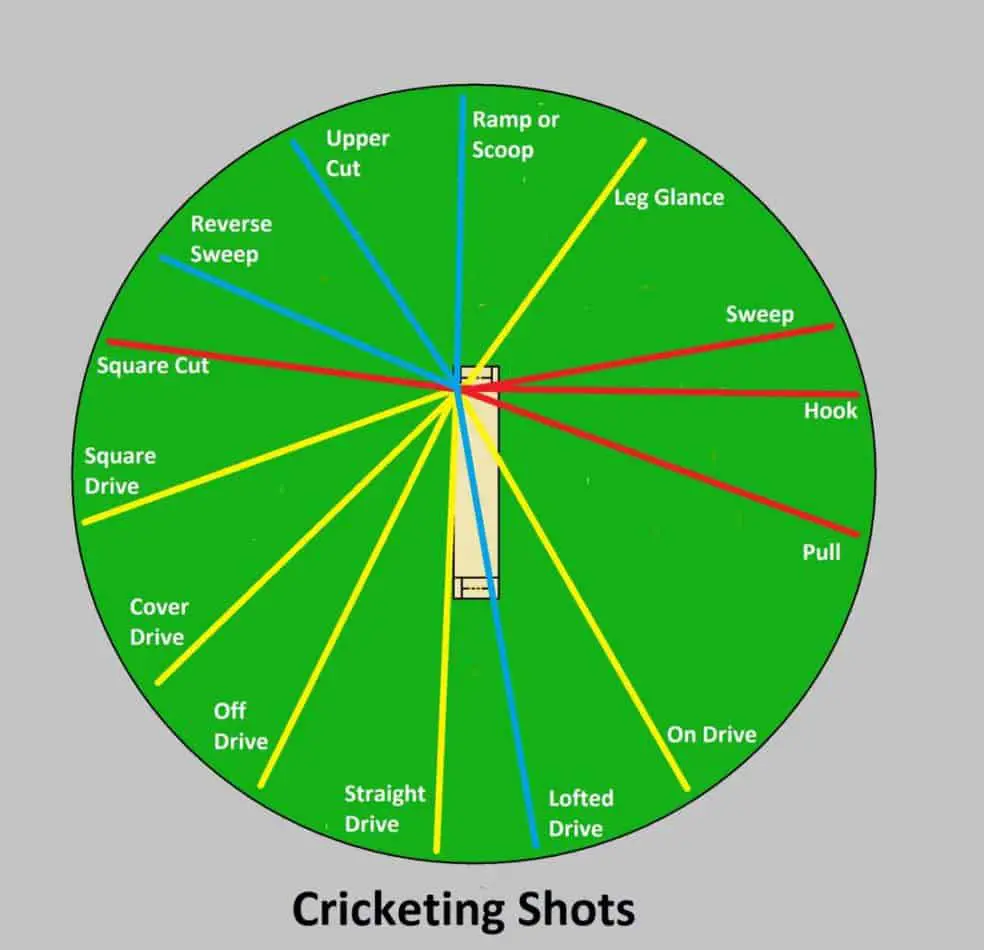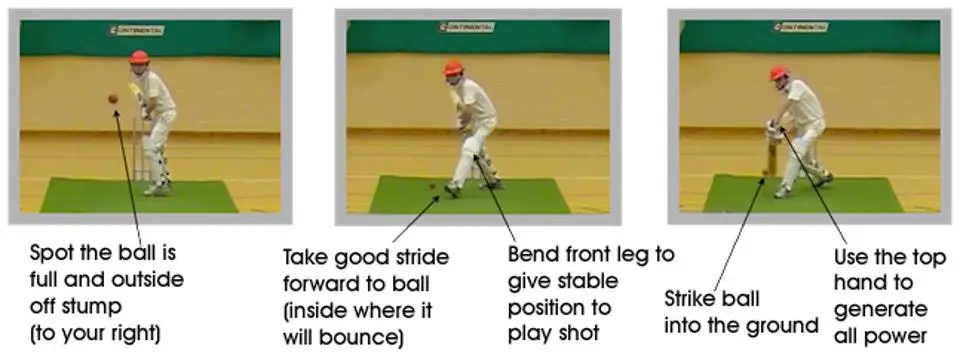In cricket, a batsman has two key roles to play – to score runs and to defend his wicket. Not all balls can be attacked nor all balls need to be defended. Depending on the type of delivery and the field placement, a batsman may have to make adjustments while playing the shot.
But do you know what all types of shots are there in cricket? What kind of shots you can play to a particular type of delivery? What are the innovative shots? How to tackle the field placements?
In cricket, the type of shot a batsman plays depends on the line and length of the ball. Some of the most common cricket shots are the drives, cuts, glances, pulls, hooks, or sweeps. In modern cricket, innovative shots like switch hit, scoops, or reverse sweep are also quite common.
If you want to know about all the orthodox as well as innovative shots and when they are preferably played, this article is just for you.
Let’s explore all the shots found in the cricket book, along with some innovative or unorthodox shots played by some of the geniuses of the sport.
The above chart showcases the direction in which a typical shot is played by the batsman. The chard is for a right handed batsman. For a left-handed batsman, you can use a mirror image of this chart to understand the type of cricket shots. So, make sure you refer back to this chart in case any particular shot is unclear.
1. Defensive Shots
Sometimes playing a defensive shot is a better choice than the attacking one, owing to the merit of the delivery. You can play defensive shots on the front foot or back foot. Let’s look at both kinds of defensive shots in detail.
Forward Defence
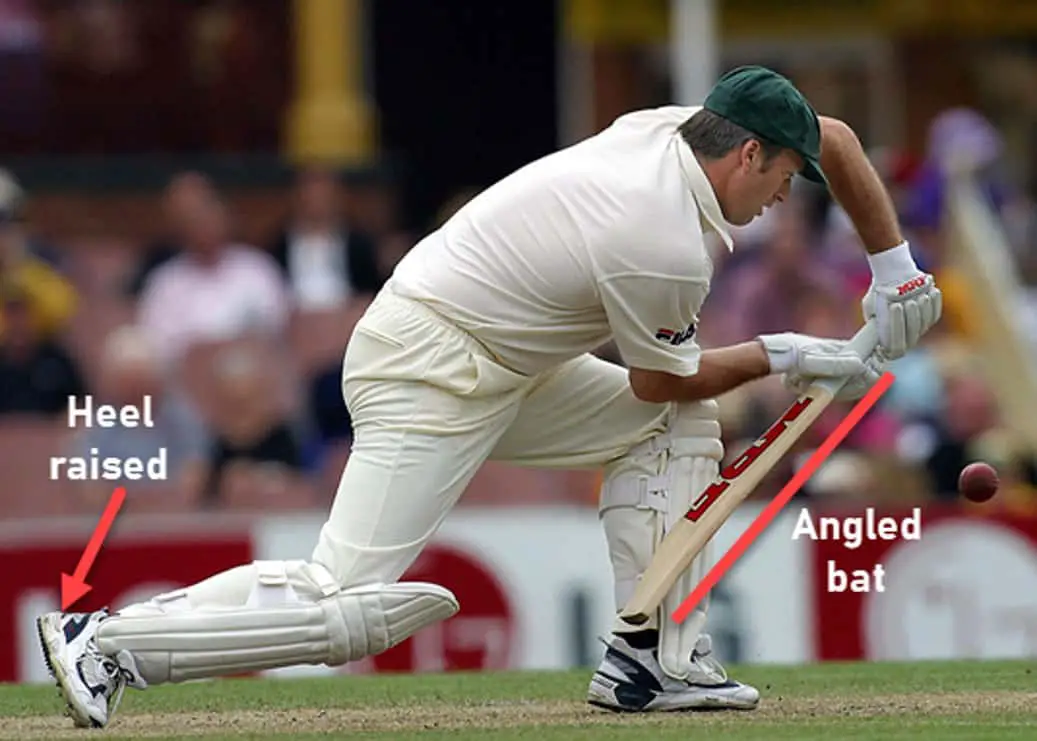
It is one of the shots played on the front foot, hence the name. The forward defence or the front-foot defence is the best choice when the ball is pitched around the good length and the line of the ball is threatening the stumps.
To play this shot, move your front foot towards the pitch of the ball and get your head near your knee before bringingthe bat down to connect the ball.
There shouldn’t be a big gap between the bat and the pad and the bat’s angle should be downwards, towards the ground. Raise the heel of your back foot as you connect, and avoid a follow-through as the intention is to block and not strike the ball.
In one of my earlier posts, I’ve provided in-depth information on how to play a good length delivery in Cricket. Make sure you check it out!
Back Foot Defence
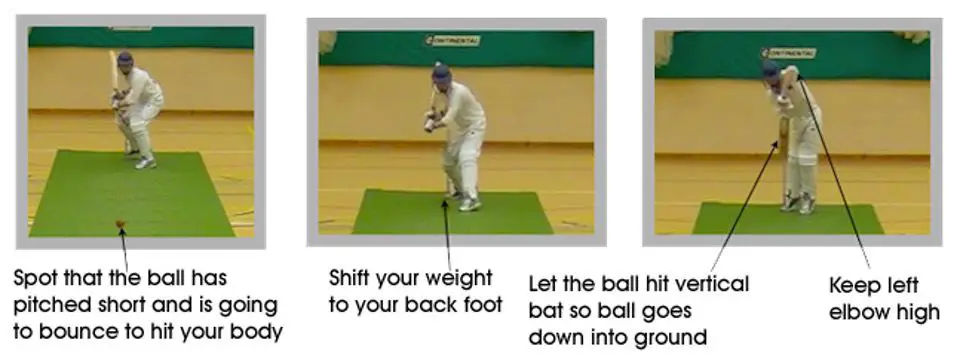
It is said that to make big scores, mastering the Back Foot defence along with the Forward Defense is a necessity. The back-foot defense can be applied to counter a ball pitched just short of the good length, that is rising between the waist and the chest.
Again, the intention should be to defend the delivery instead of scoring runs. The batsman playing such a shot has to ensure the ball does not land within the catching zones of fielders, and it is done so by getting on top of the bounce and directing the ball towards the ground.
For this shot, you need to transfer your weight from your front foot on to your back foot so that you can go deeper into the crease. Keep a high front elbow with the bat angled towards the floor as you make contact with the ball.
Play with soft hands, so the ball drops just in front of your feet. Standing tall is vital here, to get over the top of the delivery. The following image shows a very good example of the back foot defence.
2. Drives
Drives are straight-batted shots, played by swinging the bat in a vertical arc through the line of the ball. Let’s explore the drive shots.
Straight Drive

It is one of the most classical and graceful shots from the repertoire. If you want to see the perfect example of a straight drive, watch India’s Sachin Tendulkar or Virat Kohli in action.
The straight drive is usually played if the delivery is good to full length and the line is around the middle stump or off stump. To play the shot, you should make the forward stride to bring the front foot close to the pitch of the ball.
You need to bend your front leg slightly, while your head should be above your front knee. The bat face should be facing straight towards the bowler while striking the ball and a high front elbow is recommended.
Off Drive
Similar to the straight drive, the off drive is played in the direction of the mid-off and long-off fielding position. The playing technique is similar to the straight drive shot. Also, like the straight drive, the off drive is played against a fuller delivery directed at or slightly outside the off stump.
Here, a well-timed forward stride towards the pitch of the ball and the follow-through towards the target area is very important. A slight swing or mistime can land you in deep trouble.
On Drive
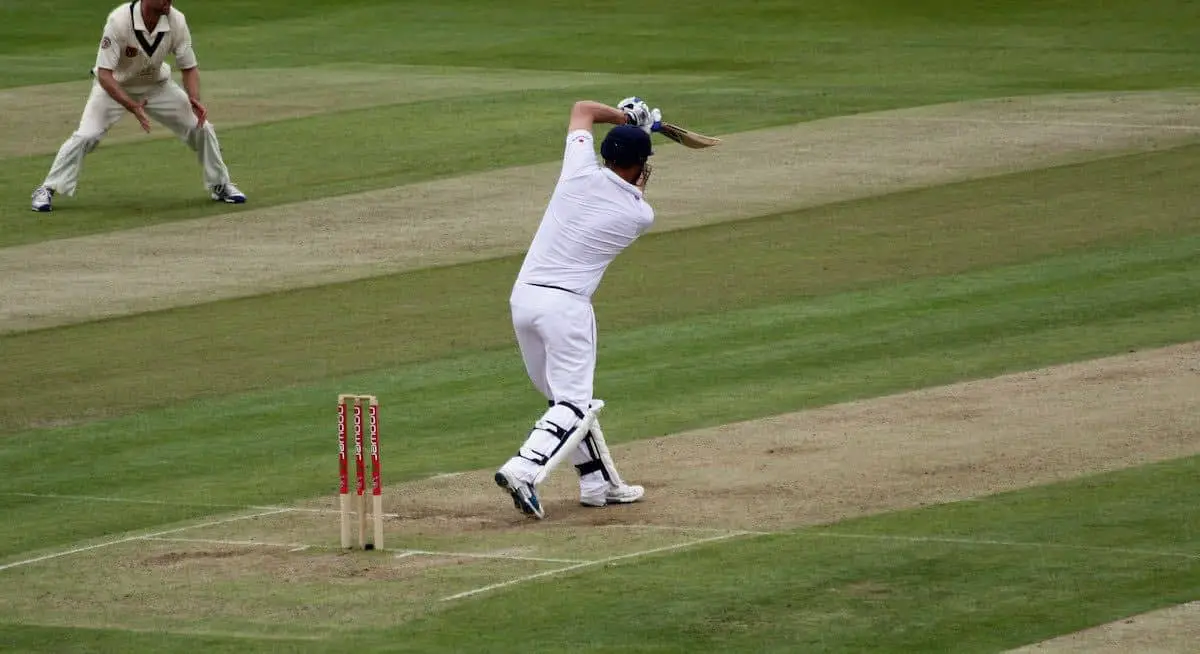
As the name suggests, on drive is played towards mid-on and long-on fielding position. Generally, this shot is offered for a full-length delivery bowled at the leg stump.
It is played similar to the straight drive, except the target direction is towards the mid-on fielding position. The shot is played on the front foot, with the direction and follow-through intended towards the mid-on. The batsman must bring his bat down towards the pitch of the ball to play the On Drive shot.
Cover Drive

The Cover Drive is similar to the drives we saw earlier, the only difference is the direction in which the ball is hit. It is named cover drive as the ball is driven through the “covers” region of the field, which is between the straight and the square part at the off-side.
This shot is played to a good to full-length delivery that is around the off-stump line or wider. This is played in a similar fashion as the off drive shot, just that the front foot needs to be brought forward and slightly wider towards the line of the ball. Also, the bat’s face and the follow-through should be in the direction of the cover area.
Square Drive
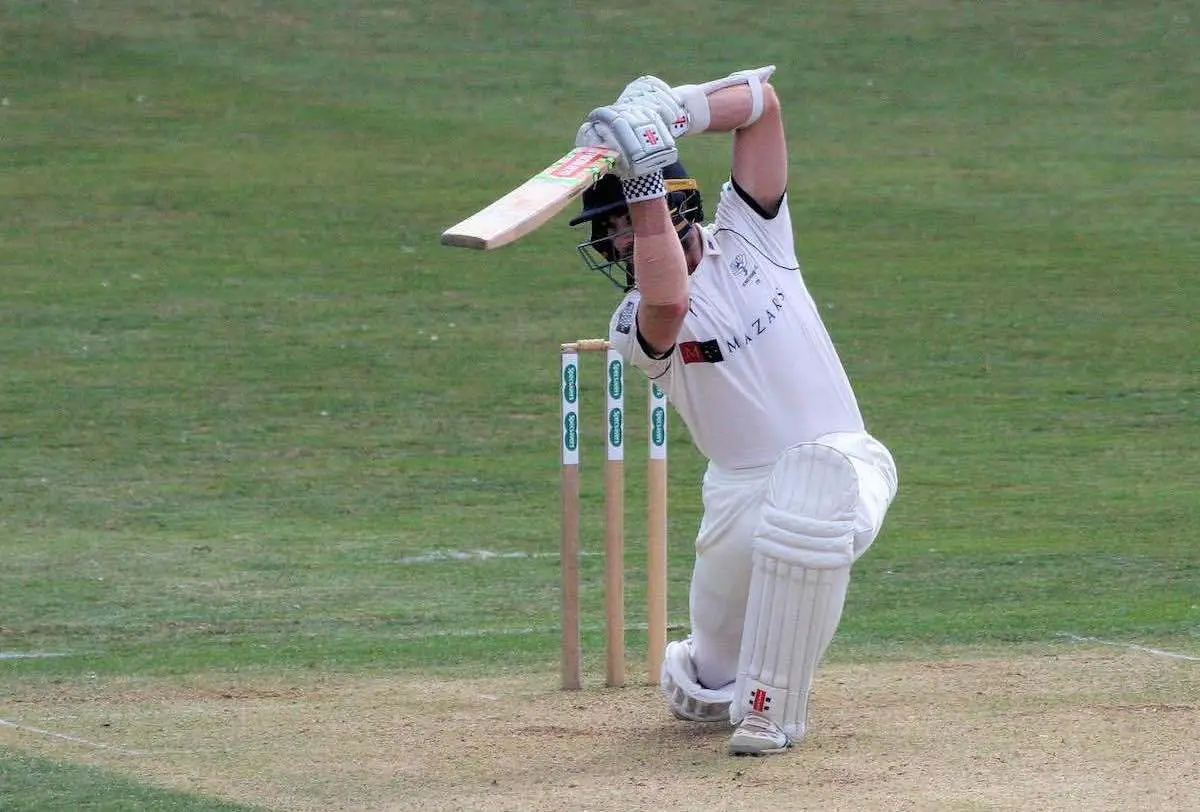
The square drive can be played against good to full-length deliveries that are wide outside the off stump. Square drive is very difficult and risky especially for beginners as it is played with the hands away from the body.
To play the square drive, move your front foot towards the pitch and the line of the ball with. Ensure that the front leg is bent, the head should be over the front knee. You should be in balance while playing the shot. While playing such a shot, the timing must be perfect.
Check out the below video for more details.
Tip: Never take your eyes off the ball till you make the contact. To play a square drive, a lot depends on the hand-eye coordination.
Back Foot Drive
It is a back-foot shot. With the back foot drive, you can score runs in the area between mid-on and cover to a delivery that is just short of a length depending on the line of the ball, which can be on the stumps or just outside the off stump.
To play the back foot drive, move back towards the stumps, align with the line of the ball, and stand as tall as possible, with your feet relatively close together. Then bring the bat through the line of the ball, and make contact with the vertical bat. A high front elbow is crucial here as well to keep the bat straight.

If the line of the delivery is on your body or at leg stump, then hit the ball through the mid-on area. Deliveries on the middle or off stump can be played straight down the ground. If the delivery is just outside the line of off stump, you can play it through mid-off.
3. Leg Glance
When a ball is flicked towards the leg side with the straight bat and some wrist work, it is called the leg glance.
With this shot, the ball is deflected towards the square leg or fine leg area. You can play the Leg Glance on the front foot or back foot depending on the length of the ball. The leg glance is all about deflecting the ball and making use of the pace of the ball.

Front Foot Leg Glance
Front foot leg glance can be played against deliveries pitched anywhere between good and full length, going on the middle stump or the leg stump line. To play the front foot leg glance, follow these easy steps:
Step 1
Observe the line of the ball and lean towards it, placing the weight on the front leg. Ensure the front leg is bent.
Step 2
Bring the bat down, as straight as possible. With some wrist work, turn the face of the bat slightly towards the leg side.
Step 3
Connect the ball in front of the front pad to glance it away.
Back Foot Leg Glance
Similar to the front foot glance, in case of the back foot glance, the flick is executed on the back foot. It can be played to short or back of the length deliveries, providedit reaches you at a comfortable height for the straight batted flick shot. It should be played only if the delivery is either in line with the stumps (or the body) or when it’s going down the leg side.
Back foot glance is a very good choice of shot to play against opening bowlers because it relies on the ball coming onto the bat. If you can play this shot well, you’ll easily score some runs square and behind the wicket on the leg side.
Learn back foot leg glance in these three steps.
Step 1
Move back in your crease. Ensure you have your leg stump covered. The head should be forward while the body should be in line with the ball.
Step 2
Bring the bat down, as straight as possible. With some wrist work, turn the face of the bat slightly towards the leg side.
Step 3
Connect the ball in front of the body, and glance it away.
Back foot leg glance
Image 1 credit Image 2 credit Image 3 credit
4. The Sweep Shots
Primarily used against spinners, the sweep shots are cross-batted shots played on the front foot, usually by kneeling on one knee.

There are a few variations of sweep shots.
Sweep
The sweep shot is intended to dispatch the ball on the leg side between the mid-wicket to the fine leg. The shot can be played against good to full-length deliveries.
It is more suitable if the ball is pitched at the middle or leg stump. It is not advisable to play sweep shots against the deliveries turning away from you as it will conflict with the bat-swing direction and yield unwanted results.
Reverse Sweep
The reverse sweep is an innovative sweep played with a reversed bat. The shot has become extremely popular in modern cricket. When the captain or the spinner sets fielders on the leg side to counter the sweep shots, it leaves some gaps on the off-side.
In such a scenario, instead of the sweep, the batsman can go for the reverse sweep shot and exploit the off-side area by dispatching the ball in the opposite direction compared to the regular sweep shot i.e. behind the square on the off-side
Paddle Sweep
The paddle sweep is played to a ball fuller and quicker ball. Unlike the regular sweep shot, there is no full-fledged bat swing here. The goal here is to hit ball finer i.e. as close to the wicketkeeper as possible.
To play this shot, you must be low in the position, with head moved forward and the ball must have pitched slightly on middle and leg Then you can extend the arms in the front, near the point of impact, and use the pace of the ball to direct the ball as fine as possible.
Tip: Do not try to hit the ball.
5. Cut Shots
Cuts shots are basically cross-batted shots played at a short delivery. In cut shots, the batsmen use the pace of the ball to deflect the ball towards the square or behind the square on the off-side.
Square Cut
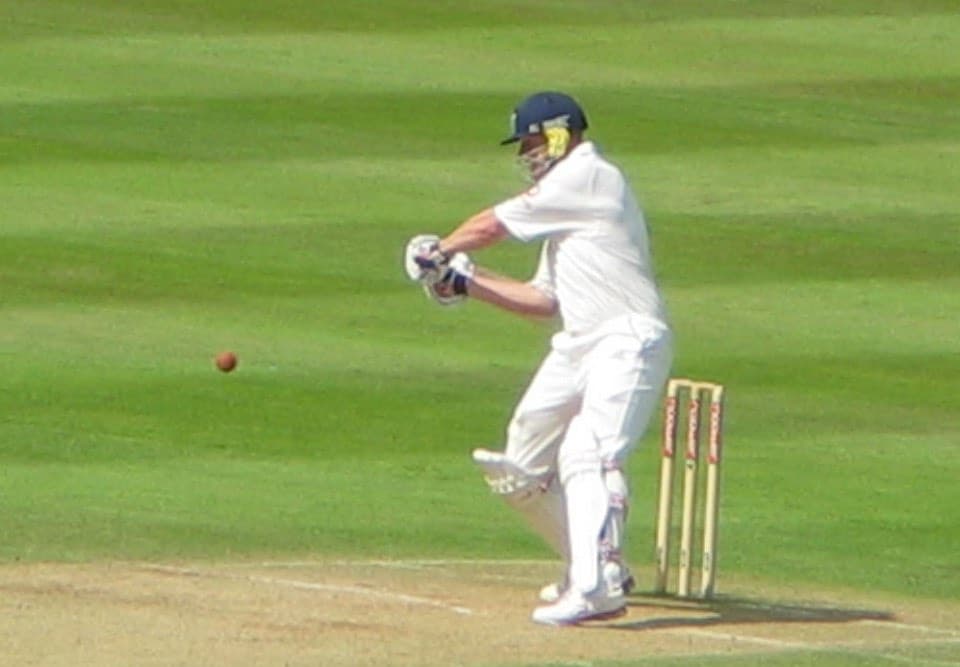
As the name suggests, this shot is played square of the wicket on the off-side. It is one of the most widely used shot and used to punish the bowlers for their bad line and length. It is a back-foot shot, played against the back of length or short deliveries that are wide outside the off stump.
Tip: Deliveries that are closer to the body are not suitable for this shot. You need sufficient room to play this shot.
To play the square cut, you should move to your back foot, and then free your arms and try to strike the ball with the horizontal bat. Remember, the later you play the ball, the squarer the ball will go. Stay tall during the shot, otherwise, you may end up hitting the ball in the air.
Uppercut
I remember in the early 2000’s Sachin Tendulkar playing the uppercuts against the genuine fast bowlers and since then many batsmen followed him.
In the above video, you can see how Rohit Sharma (on the right) re-created Sachin Tendulkar’s unforgettable uppercut shot played against the fastest bowler Shoaib Akhtar in the 2003 World Cup.
The Upper Cut is played against the back of a length or short balls that are outside the line of the off-stump. The shot is played on the back foot, to hit the ball over the top of the slip region or in the air behind the square on the off-side.
To smash the Upper Cut, you need to get underneath the ball, and once the ball reaches a comfortable height, extend your arms and slice the ball. It is crucial to remain well balanced while playing the shot.
6. Pulls and Hooks
It’s time to check out a couple of stunning back foot shots played on the leg side on short-pitched deliveries.
Pull Shot
With the Pull Shot, you can dispatch the ball on the leg side, between the mid-wicket and the fine leg. This shot can be played against short or back of length deliveries that are in line with the stumps. It’s played with better control if the ball is more towards the leg side.
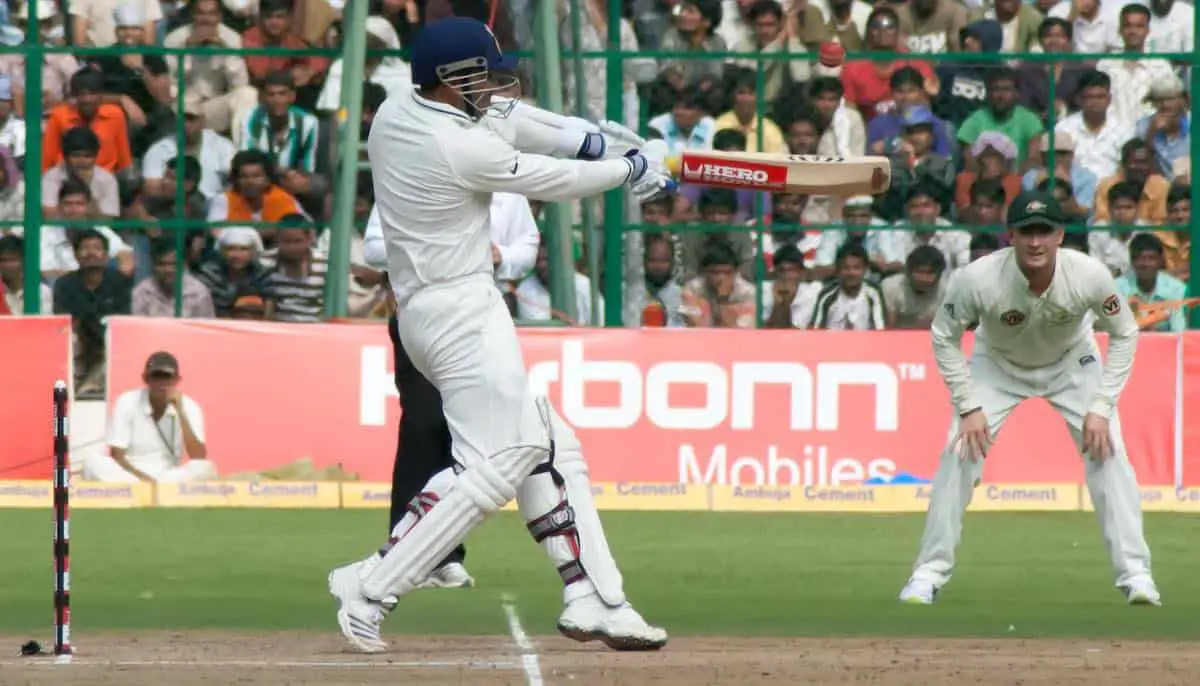
This shot can be comfortably played if the ball’s bounce is between the waist and the shoulder.
To play a pull shot, make sure you transfer your weight on the back foot first, before rotating your torso and swinging the bat horizontally to intercept the rising ball at the right moment.
Depending on the field position, you need to decide whether to hit the ball in the air. To avoid the aerial route, try to roll your wrist by rotating your top hand over the bottom hand at the time of contact.
Hook Shot
This Hook Shot is played if the bounce of the ball is around or over the shoulder. So, the short length is the ideal length for the hook shot, while the line of the ball should be in line with the stumps or preferably more towards the leg side. You can target the area between the mid-wicket and fine leg with the hook shot.
The shot is played similar to the pull shot and involves the rotation of the torso and bat swing. Here, the power is generated from the speed of the rotation and the hand speed.
If the ball’s line is more towards the leg side, it will not require much power as you will be able to deflect the ball on the leg side easily using the pace of the ball. If the ball is on the off stump, you would need more power, also the ball will travel squarer on the leg side.
More often, the hook shot is played in the air, so beware of the leg side field placements while attacking the short-pitched delivery with the hook shot.
7. Some Other Innovative or Unorthodox Cricket Shots
We already covered a few innovative shots earlier in this article, like Reverse Sweep or Upper Cut. Let’s take a look at some more unorthodox or innovative shots.
Ramp Shot
The Ramp Shot is a back-foot shot which can be played against short deliveries, rising above the chest height to send the ball behind the square on the off-side. It is more about deflecting the rising ball behind the square using the ball’s pace.
To master the ramp shot, check out the above video.
Switch Hit
In switch hit, a right-hander changes the stance as well as the grip to temporarily turn in to a left-hander, and vice versa. The innovative shot is not an easy shot to play. You won’t find it being played by the batsmen that often, but such a shot is a delight to watch.
Switch hit is played by making pre-meditated movements right before the bowler releases the ball. It can be played against any kind of deliveries and depending on the batsman’s strike, the ball can be sent anywhere in the field. Lots and lots of practice is needed to play such shots confidently in the match.
In the above video, watch Kevin Pietersen hit a couple of sixes with the switch hit against New Zealand
Periscope
One of the cheekiest shots, the periscope is the latest innovation in the cricket world, invented by Bangladeshi batsman Soumya Sarkar. He plays this shot mainly to counter bouncers.
To play periscope, Sarkar holds his bat in the air and then clips the ball with it towards the short fine leg.
Paddle Scoop
The regular scoop shot is sometimes also referred to as paddle scoop, Marillier shot, or ramp shot. It is played behind the square on both sides of the wicket, to a good to full-length delivery. It can also be played to a full toss or a yorker ball, by intercepting it before the bounce.

The shot is played by extending the bat out in front of you in a face-up position and then deflecting the ball behind. You can tilt your bat to deflect the ball on the left or right side.
Dilscoop
During the 2009 ICC World Twenty20 tournament, Sri Lankan batsman Tillakaratne Dilshan exhibited a special scoop shot which is now commonly known as Dilscoop. It is different from the paddle scoop because Dilshan’s scoop is played straight over the head of the wicketkeeper.
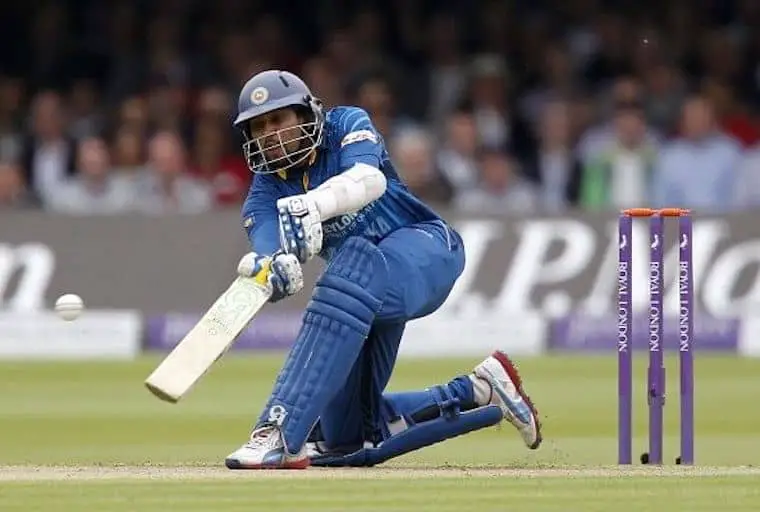
Reverse Scoop
This is another innovative scoop shot. We have seen many times AB de Villiers playing the reverse scoop with which he hits a six over the wicket keepers head.
To play reverse scoop, de Villiers moves 2 or 4 times before the bowler delivers the ball and still sets himself in a very good position to hit it over the wicketkeeper’s head.
Watch the video above to witness the amazing reverse scoop of AB de Villiers.
The Helicopter Shot
Last but not the least, MS Dhoni’s famous helicopter shot is always a treat to watch.
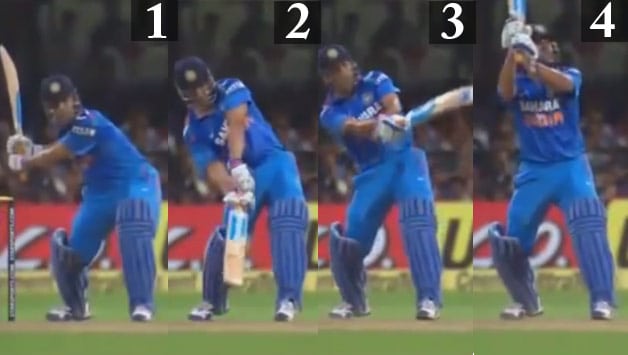
The bat swing in this shot resembles the rotation of the blades of a helicopter, hence the name. The shot is played on the leg side.
Watch the video to see how you can play this iconic shot.
Final Thoughts
There’s your complete guide to all the cricketing shots. To be a successful batsman, you need to have very good decision making about the shot selection, and knowing them is the first step in this direction.
A great batsman not only masters all the shots from the cricket manuals, but he also enhances the game with his own batting style and innovative techniques.
A genius batsman invents his own shots just as Dilshan invented the Dilscoop and MS Dhoni came up with his helicopter shot which cannot be found in any book of cricket, and that’s the beauty of the game of cricket.
I hope you thoroughly enjoyed this in-depth article about all types of cricket shots.

